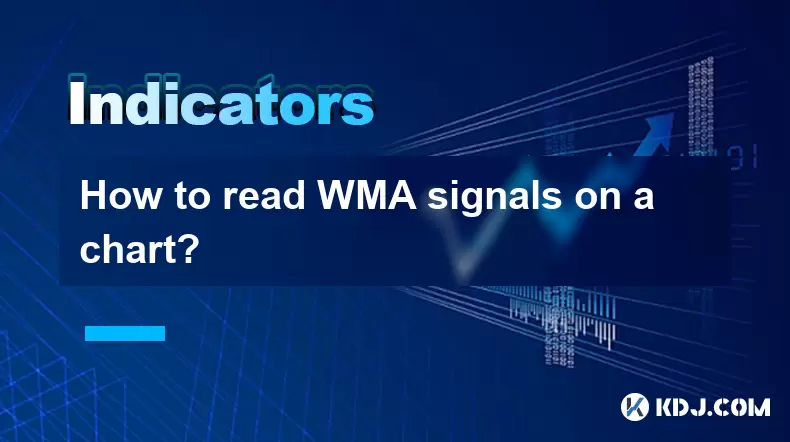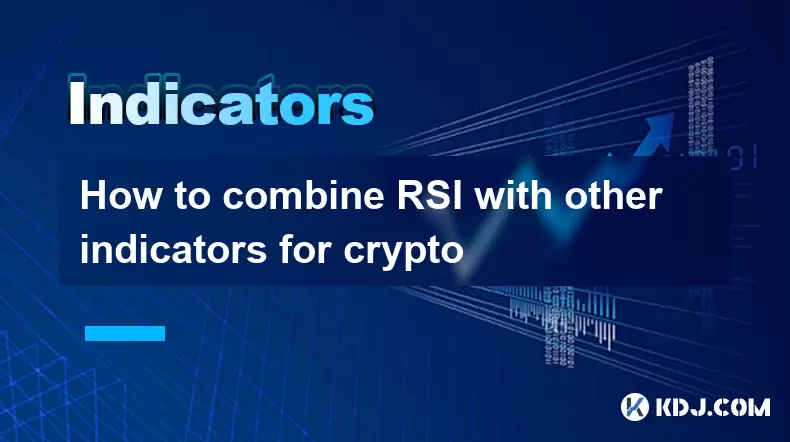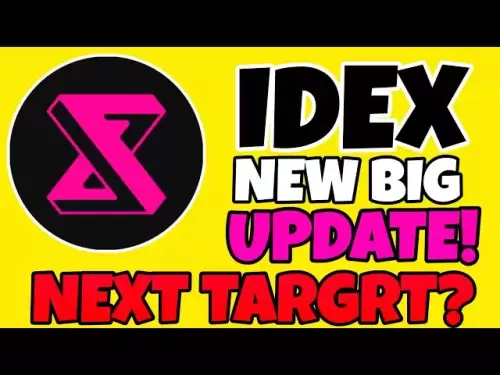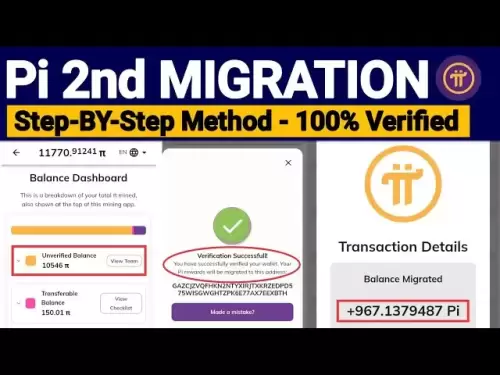-
 Bitcoin
Bitcoin $117,991.5647
-0.03% -
 Ethereum
Ethereum $2,966.4808
0.18% -
 XRP
XRP $2.8076
0.64% -
 Tether USDt
Tether USDt $1.0003
0.00% -
 BNB
BNB $689.9050
-0.63% -
 Solana
Solana $162.0407
-0.80% -
 USDC
USDC $0.9999
0.00% -
 Dogecoin
Dogecoin $0.1995
-1.51% -
 TRON
TRON $0.3001
-1.21% -
 Cardano
Cardano $0.7426
3.25% -
 Hyperliquid
Hyperliquid $47.7978
2.84% -
 Stellar
Stellar $0.4411
16.52% -
 Sui
Sui $3.4267
0.15% -
 Chainlink
Chainlink $15.3148
0.07% -
 Bitcoin Cash
Bitcoin Cash $506.5880
-1.91% -
 Hedera
Hedera $0.2222
12.41% -
 Avalanche
Avalanche $21.2049
1.67% -
 UNUS SED LEO
UNUS SED LEO $9.0606
-0.19% -
 Shiba Inu
Shiba Inu $0.0...01325
-0.86% -
 Toncoin
Toncoin $2.9979
0.32% -
 Litecoin
Litecoin $94.3717
1.13% -
 Polkadot
Polkadot $3.9873
-0.29% -
 Monero
Monero $336.1497
0.92% -
 Dai
Dai $0.9999
-0.01% -
 Uniswap
Uniswap $8.5189
-0.60% -
 Ethena USDe
Ethena USDe $1.0005
-0.04% -
 Pepe
Pepe $0.0...01236
-0.92% -
 Bitget Token
Bitget Token $4.4002
-0.23% -
 Aave
Aave $303.5433
1.05% -
 Bittensor
Bittensor $391.1314
-0.35%
How to read WMA signals on a chart?
The Weighted Moving Average (WMA) helps traders identify trends by giving more weight to recent prices, offering quicker signals for entries and exits.
Jul 11, 2025 at 09:07 am

Understanding the WMA Indicator
The Weighted Moving Average (WMA) is a technical analysis tool used by traders to identify trends in price movements. Unlike simple moving averages, which give equal weight to all data points, the WMA assigns greater importance to recent prices. This makes it more responsive to new information and potentially more accurate in identifying trend changes. When applied to a chart, the WMA appears as a smooth line that follows the price action closely. The key advantage of using WMA lies in its ability to highlight momentum shifts faster than other moving averages. Traders often use this indicator to determine entry and exit points based on crossovers or divergences.
How to Calculate WMA
To fully grasp how WMA signals work, understanding its calculation method is essential. The formula for WMA involves multiplying each price by a specific weight and then summing those values before dividing by the total weight factor. For example, in a 5-period WMA, the most recent price gets multiplied by 5, the previous one by 4, and so on down to 1. These weighted values are added together and divided by the sum of the weights (in this case, 1+2+3+4+5 = 15). This process ensures that newer prices have a stronger influence on the average. Many trading platforms perform these calculations automatically, but knowing how WMA is derived helps traders interpret its behavior more effectively when analyzing charts.
Setting Up WMA on Your Chart
Adding the WMA to your chart typically involves accessing the indicators menu on your trading platform. In most cases, you can search for "Weighted Moving Average" or scroll through the list under moving averages. Once selected, you will be prompted to configure the settings. The default period is usually set to 9 or 14, but this can be adjusted depending on your trading strategy and time frame. Some platforms allow customization of colors, line thickness, and even additional parameters like offset. After applying the WMA, it will appear overlaid on the price chart, helping visualize the direction and strength of the trend. It's crucial to experiment with different periods to find what works best for your market and strategy.
Interpreting WMA Signals
One of the primary ways traders use WMA is to assess trend direction. When the price is above the WMA line, it suggests an uptrend; conversely, if the price remains below the WMA, it indicates a downtrend. Another common signal occurs when multiple WMA lines cross each other. For instance, a short-term WMA crossing above a longer-term WMA may signal a bullish move, while a crossover in the opposite direction could indicate bearish momentum. Additionally, WMA divergence can provide valuable insights. If the price is making higher highs but the WMA fails to confirm, it might hint at weakening momentum. Recognizing these patterns requires practice and should always be combined with other tools for confirmation.
Combining WMA with Other Indicators
While WMA is powerful on its own, combining it with other technical indicators enhances its effectiveness. Popular choices include Relative Strength Index (RSI) and Moving Average Convergence Divergence (MACD). RSI helps identify overbought or oversold conditions, which can complement WMA trend signals. If the WMA suggests a bullish trend but RSI shows overbought levels, caution may be warranted. Similarly, MACD crossovers aligned with WMA signals can strengthen trade setups. Volume indicators also play a role—rising volume alongside a WMA crossover increases the likelihood of a valid trend continuation. Always backtest combinations on historical data before applying them in live trading environments.
Frequently Asked Questions
What is the difference between WMA and EMA?
The Weighted Moving Average (WMA) assigns linearly decreasing weights to past prices, giving the most recent data point the highest weight. In contrast, the Exponential Moving Average (EMA) applies a smoothing factor that decays exponentially, meaning older prices still have some influence, albeit much smaller than recent ones. WMA reacts more sharply to price changes compared to EMA, which offers smoother transitions.
Can WMA be used in range-bound markets?
Yes, WMA can still be useful in sideways or range-bound markets, although its effectiveness diminishes compared to trending environments. In such cases, traders often combine WMA with oscillators like Stochastic or RSI to filter false signals. Observing how price interacts with the WMA line during consolidation phases can help anticipate potential breakouts.
Is WMA suitable for day trading?
Absolutely. Many day traders prefer WMA due to its sensitivity to recent price movements. Shorter periods like 5 or 9 are commonly used on intraday charts to capture quick reversals or confirm entries. However, because of its responsiveness, WMA may generate more noise in fast-moving markets, so proper risk management and filtering mechanisms are necessary.
How do I choose the right WMA period?
Selecting the appropriate WMA period depends on your trading style and the asset being traded. Short-term traders often use lower periods (e.g., 5–10) for quicker responses, while swing traders might opt for 20 or higher to capture broader trends. Backtesting various settings across different markets and time frames can help determine the optimal configuration for your strategy.
Disclaimer:info@kdj.com
The information provided is not trading advice. kdj.com does not assume any responsibility for any investments made based on the information provided in this article. Cryptocurrencies are highly volatile and it is highly recommended that you invest with caution after thorough research!
If you believe that the content used on this website infringes your copyright, please contact us immediately (info@kdj.com) and we will delete it promptly.
- Little Pepe, Pepe Coin, and Bonk: Meme Coin Mania Sweeping Crypto in 2025!
- 2025-07-13 22:36:38
- ADA, NEAR, BlockDAG: Crypto Trends and Insights You Can't Miss (NYC Style)
- 2025-07-13 22:36:38
- TRUMP Tokens Unlocked: A Deep Dive into World Liberty Financial and Aqua 1's $100M Investment
- 2025-07-13 22:50:37
- Cryptos Under $0.10: Solana's Successors and the Top 10 Potential
- 2025-07-13 22:50:37
- Crypto Week, TRUMP Tokens, and Crypto Bills: Navigating the Wild West of Digital Assets
- 2025-07-13 23:05:35
- Bitcoin's Rally: Consolidating for the Next Leap?
- 2025-07-13 23:05:35
Related knowledge

Advanced RSI strategies for crypto
Jul 13,2025 at 11:01am
Understanding the Basics of RSI in Cryptocurrency TradingThe Relative Strength Index (RSI) is a momentum oscillator used to measure the speed and chan...

Crypto RSI for day trading
Jul 12,2025 at 11:14am
Understanding RSI in the Context of Cryptocurrency TradingThe Relative Strength Index (RSI) is a momentum oscillator used to measure the speed and cha...

Crypto RSI for scalping
Jul 12,2025 at 11:00pm
Understanding RSI in the Context of Crypto TradingThe Relative Strength Index (RSI) is a momentum oscillator widely used by traders to measure the spe...

What does an RSI of 70 mean in crypto
Jul 13,2025 at 06:07pm
Understanding the RSI Indicator in Cryptocurrency TradingThe Relative Strength Index (RSI) is a widely used technical analysis tool that helps traders...

How to avoid RSI false signals in crypto
Jul 13,2025 at 06:21pm
Understanding RSI and Its Role in Crypto TradingThe Relative Strength Index (RSI) is a momentum oscillator used to measure the speed and change of pri...

How to combine RSI with other indicators for crypto
Jul 12,2025 at 08:35am
Understanding the Role of RSI in Crypto TradingThe Relative Strength Index (RSI) is a momentum oscillator that measures the speed and change of price ...

Advanced RSI strategies for crypto
Jul 13,2025 at 11:01am
Understanding the Basics of RSI in Cryptocurrency TradingThe Relative Strength Index (RSI) is a momentum oscillator used to measure the speed and chan...

Crypto RSI for day trading
Jul 12,2025 at 11:14am
Understanding RSI in the Context of Cryptocurrency TradingThe Relative Strength Index (RSI) is a momentum oscillator used to measure the speed and cha...

Crypto RSI for scalping
Jul 12,2025 at 11:00pm
Understanding RSI in the Context of Crypto TradingThe Relative Strength Index (RSI) is a momentum oscillator widely used by traders to measure the spe...

What does an RSI of 70 mean in crypto
Jul 13,2025 at 06:07pm
Understanding the RSI Indicator in Cryptocurrency TradingThe Relative Strength Index (RSI) is a widely used technical analysis tool that helps traders...

How to avoid RSI false signals in crypto
Jul 13,2025 at 06:21pm
Understanding RSI and Its Role in Crypto TradingThe Relative Strength Index (RSI) is a momentum oscillator used to measure the speed and change of pri...

How to combine RSI with other indicators for crypto
Jul 12,2025 at 08:35am
Understanding the Role of RSI in Crypto TradingThe Relative Strength Index (RSI) is a momentum oscillator that measures the speed and change of price ...
See all articles























































































